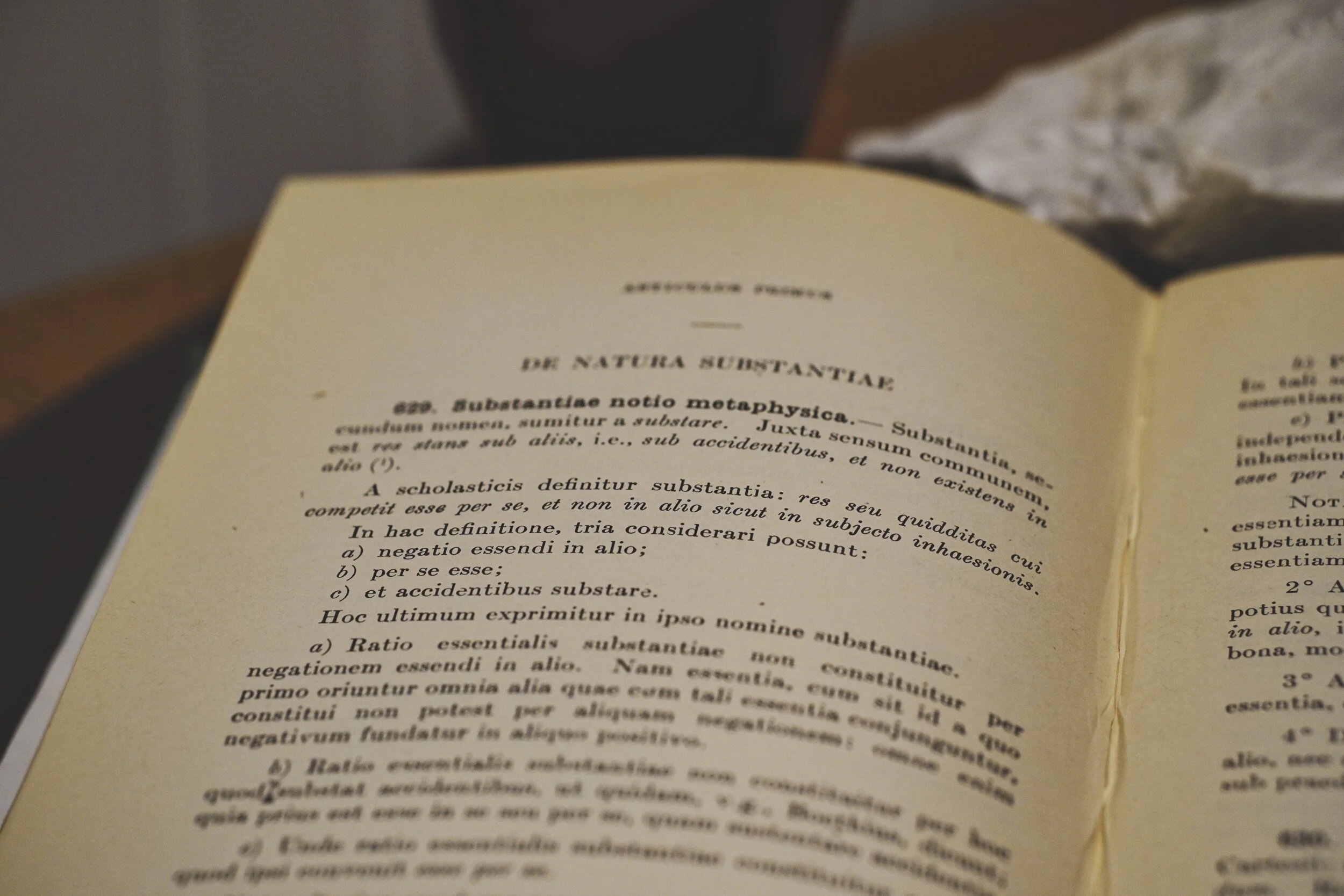Holy House has the only accredited Latin as a second language course in the entire Province of Alberta.
In the early grades (1-3) students use the Song School Latin course by Classical Academic Press. Song School Latin focuses on teaching vocabulary and simple phrases in an engaging way which is well-suited for young students who are not yet reading and writing fluently. Parents will be required to purchase either Song School Latin Book 1 or Book 2 (Student Edition) from Holy House.
Beginning in grade three or four, students use the Libellus Latinus course created by the staff of Holy House. This course introduces the basic components of Latin grammar in a gradual, sequential way which allows students to move confidently into the work of translation.
The study of Latin is often promoted for three reasons: its grammatical significance, its influence on English vocabulary, and its importance to the Classics and western civilization. These reasons are all secondary. For Roman Catholics, Latin ought to be studied first because it is fundamental to our culture as the primary language of our historical, academic, and spiritual traditions and patrimony. Without a facility in Latin, Roman Catholic students are disconnected from their culture, cut off from a significant formative portion of their history and their heritage. We study Latin in order to reclaim that heritage, which has a cultural and spiritual significance extending beyond western civilization and the Roman Catholic Church. Holy House attempts to reflect this significance by integrating Latin into the entire curriculum and culture in a semi-immersive way.
The goal of the grammar component of the Latin curriculum at Holy House is for students to develop, as soon as possible, enough accuracy and facility in the language to begin loving it as a language, a language which is both a tool to express themselves and a means to understand what others have expressed. Students will almost immediately begin to have the sense of satisfaction and delight that comes from translating and discovering meaning.
The love of language and the empowerment which come from mastering its technical aspects are enhanced as students encounter Latin through literature. Reading Latin stories and performing short Latin plays or dialogues help the language come alive.
At Holy House, students will also encounter Latin as part of their everyday culture. Students learn all the traditional prayers of the Church in Latin in an intentional four year cycle, including the staples of Gregorian Chant repertoire. Students celebrate birthdays in Latin, take part in scavenger hunts, pictionary and charades in Latin, listen to announcements in Latin, and read calendars and homework instructions in Latin. Latin, Latin, Latin. By the end of a few months at Holy House, a student will no longer view Latin as a strange dead language but as a familiar, living reality.
Latin Readiness and Proficiency Assessment for Junior & Intermediate Students
New junior and intermediate students who have had previous instruction in Latin may be given a placement test in order to determine the most comfortable place for them to start the Latin course. For young students, factors such as proficiency in reading English and the ability to write (in either printing or cursive) determine a student’s readiness to start the Holy House Junior and Intermediate Latin course.
In order to benefit from the Latin course at Holy House, students must be willing to exercise discipline and industriousness in studying the required vocabulary and grammar. Regular vocabulary and grammar quizzes will be an important aspect of the course, and will not only aid students in their understanding of the language and the material being studied, but will also encourage strong study habits and a sense of accountability.
Latin Honours Projects
After some study, diligent students of Latin may choose to undertake Latin Honours Projects. While the study of traditional grammar is necessary in the study of any language, these assignments are not meant to replace or replicate a typical grammar lesson or Latin exercise. Instead, they are meant to be a puzzle for keen students. The projects largely use texts from Holy Scripture which might be familiar to students and parents, and to which they would have access in English. These assignments introduce students to the complexity of translating works in another language, as even a completed assignment might leave students with a few mysteries in regards to translation.

